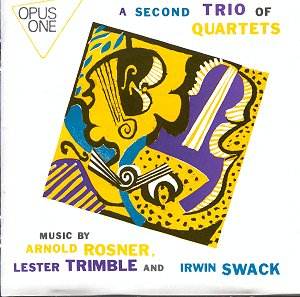 Composer: Yves Prin
Composer: Yves Prin
Works: Dioscures (1977/revised 1984), Ephèmeres (1973/revised 1992), Le Souffle d’Iris (1986/revised 1992)
Performers: Pierre-Yves Artaud (flute), Philippe Graffin (violin), Pascal Post (clarinet), Orchestra Philharmonique de Radio France, conducted by Bruno Ferrandis
Recording: Studios of Radio France, June 1997
Label: NAXOS
Yves Prin emerges as a compelling figure within the contemporary classical landscape, a composer whose works, reflective of a rich French sensibility, are both intricate and demanding. His background as a conductor and pianist deeply informs his compositional style, allowing him to explore sonorous textures and orchestrational clarity reminiscent of his contemporaries, such as Pierre Boulez and Henri Dutilleux. This Naxos recording presents three of his works, each revised to hone their effectiveness and depth. The historical context of these pieces reveals a composer engaged in a dialogue with the avant-garde, yet firmly rooted in lyrical expression.
The disc opens with ‘Ephèmeres,’ a capriccio for violin and chamber orchestra, which unfortunately does not fully establish its thematic potential. The work’s cadenza, which erupts early in the composition, is marked by an almost frenetic energy that disrupts the structural coherence. This endeavor to engage the listener through virtuosic display ultimately feels excessive, diverting attention from the more subtle interactions between the soloist and the orchestra. The violin, played with notable technical prowess by Philippe Graffin, engages in various extended techniques, yet these efforts seem to lack the purposeful integration that characterizes Prin’s more successful compositions.
Transitioning to ‘Dioscures,’ the program gains momentum. The work opens with ethereal soundscapes created by disembodied gongs and piano, gradually introducing a cello that sings a rapt cantilena. The dialogue between the solo flute and clarinet is particularly striking, as they navigate a dreamlike atmosphere that feels almost otherworldly. Here, Prin’s ability to build polyphonic textures over a static pedal harmony comes to the fore, evoking a sense of suspended time. The orchestral execution, under Bruno Ferrandis, is commendable; the players demonstrate a keen understanding of Prin’s sonic palette, delivering a performance that is both sensitive and dynamically nuanced.
The final work, ‘Le Souffle d’Iris,’ stands as a testament to Prin’s mastery of the flute concerto form. The introduction is imbued with nocturnal sounds, and the solo flute ventures into a range of extended techniques—flutter-tonguing, percussive key clicks, and whistle tones. These elements are not mere gimmicks, but integral to the unfolding narrative, creating an elusive tension that contrasts with the orchestral tremolo and guiro. The performers exhibit a remarkable synergy, particularly in the way they navigate the delicate lines of the score, revealing Prin’s intricate web of sound. The recording quality is pristine, allowing the subtleties of the orchestration to emerge clearly, showcasing the finesse of the ensemble as they execute Prin’s complex rhythms and harmonies.
This recording not only introduces Yves Prin to a broader audience but also places him within a lineage of composers who challenge the listener while inviting deep engagement. The interpretative choices made by Ferrandis and the soloists highlight the distinct character of each work, though ‘Ephèmeres’ ultimately falls short of the high bar set by ‘Dioscures’ and ‘Le Souffle d’Iris.’ The disc serves as an important document of contemporary French music, capturing a composer at the intersection of tradition and innovation, and it is a commendable entry in Naxos’s 21st Century Classics series. Prin’s ability to craft evocative sound worlds merits further exploration, and this recording is a worthy portal into his artistic vision.



